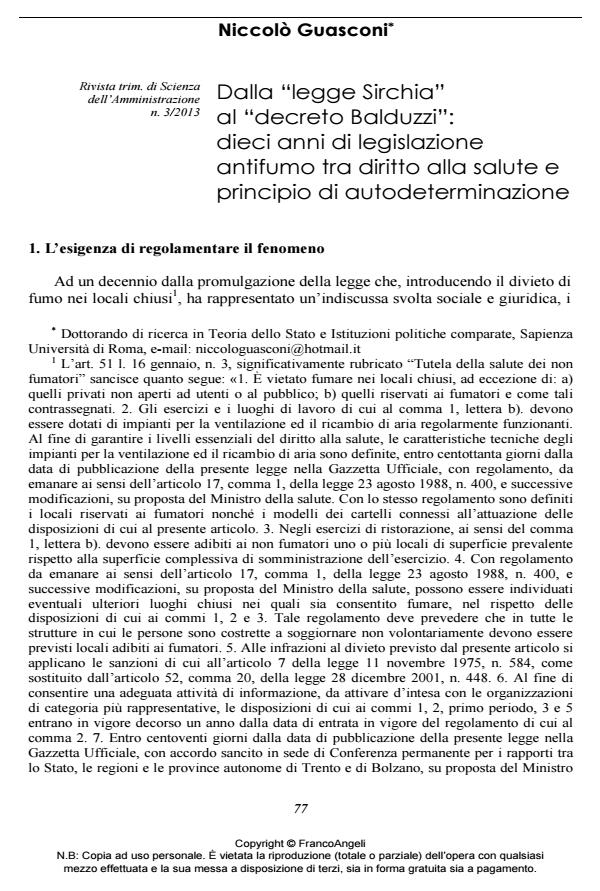From the Sirchia law to the Balduzzi decree: ten years of anti-smoking legislation between the right to health and the principle of self-determination
Journal title RIVISTA TRIMESTRALE DI SCIENZA DELL’AMMINISTRAZIONE
Author/s Niccolò Guasconi
Publishing Year 2013 Issue 2013/3
Language Italian Pages 14 P. 77-90 File size 341 KB
DOI 10.3280/SA2013-003005
DOI is like a bar code for intellectual property: to have more infomation
click here
Below, you can see the article first page
If you want to buy this article in PDF format, you can do it, following the instructions to buy download credits

FrancoAngeli is member of Publishers International Linking Association, Inc (PILA), a not-for-profit association which run the CrossRef service enabling links to and from online scholarly content.
The last decade has seen a considerable increase in the policies to fight and prevent tabagism. These actions, originally born from the need to preserve the health of third parties, have eventually led to conceive good health as a right and a duty that needs to be imposed by the public authority, even at the cost of personal freedom, and regardless of the fact that it may lead to prohibitionist extremes. The result is a new idea of State, increasingly keen to take action in areas pertinent to an individual and no one else; a State where people lose their freedom of choice and the ability to make decisions that do not impact on the rights of anybody else. What is looming ahead is a new conflict between self-determination and the imposition of healthy lifestyles, based on a need to promote wellbeing that is born from an economic concept of the human body, result of the crisis of the Welfare State.
Keywords: Smoking, welfare, right to health
Niccolò Guasconi, Dalla "legge Sirchia" al "decreto Balduzzi": dieci anni di legislazione antifumo tra diritto alla salute e principio di autodeterminazione in "RIVISTA TRIMESTRALE DI SCIENZA DELL’AMMINISTRAZIONE" 3/2013, pp 77-90, DOI: 10.3280/SA2013-003005